Do I Need a French Drain Before Finishing My Basement in Pittsburgh?
August 20th, 2025
8 min read
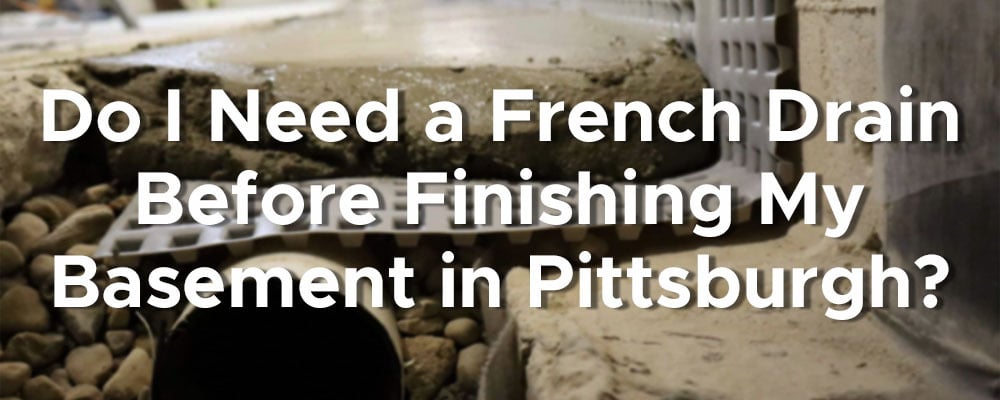
Imagine spending thousands to finish your basement, only to find musty smells or water seeping in after a Pittsburgh downpour.
It happens more often than you’d think. Our region’s heavy rain, clay soil, and older homes create real risks for basement moisture, especially if drainage issues go unnoticed before finishing begins.
At Energy Swing, we don’t install French drains, but we do finish basements the right way. That means knowing exactly what to look for before we ever build. We’ll even recommend outside waterproofing pros if we think you need one before finishing.
So, do you really need a French drain first?
This article will help you decide with confidence. You’ll learn what an interior and exterior French drain actually does and doesn’t do, how to tell if your basement needs one, when it’s safe to skip (and save money), and what to do if you’re just not sure.
No scare tactics, just straight, local advice to help you protect your investment.
Key Takeaways for Pittsburgh Homeowners
- Pittsburgh’s rainy climate and clay soil make basement drainage essential.
- A French drain is often the most effective interior waterproofing option, but not always required.
- If you’ve never had water in your basement, you can likely finish without one.
- Always address known water issues before finishing to avoid future headaches.
- Work with a team that understands both waterproofing and finishing for the best long-term results.
What Is an Interior French Drain, and How Does It Actually Work?
If water is getting into your basement (or even if it might), a French drain is one of the most common solutions Pittsburgh homeowners hear about. But what is it really, and how does it work?
A French drain is a hidden drainage system installed under your basement floor. It’s designed to collect water from behind or beneath your foundation walls and redirect it away from your home before it causes damage.
Here’s how the process usually works:
- Trenching- A contractor jackhammers a narrow trench (about 6–8 inches wide) along the inside perimeter of your basement floor.
- Drain line installation- A perforated pipe or drainage channel is placed in the trench, designed to catch water flowing from the walls or beneath the slab.
- Weep holes drilled- Small holes are drilled into the bottom row of concrete foundation blocks to release trapped water into the drainage system.
- Backfill and seal- The trench is filled with clean gravel and topped with fresh concrete.
- Water redirection- All water collected flows to a sump pump pit, where it’s actively pumped away from your home.
It might sound counterintuitive, “Why let water into my basement?” but it’s actually one of the most efficient and effective ways to control and remove water before it reaches your finished space.
Why Pittsburgh’s Climate Makes Basement Drainage So Important
Here in Pittsburgh, drainage isn’t just a nice-to-have; it’s a survival strategy for your basement. Between our rainfall, soil, and older home foundations, moisture problems are more common and more destructive than most homeowners realize.
Here’s what makes Pittsburgh basements especially vulnerable:
- Heavy rainfall- Our region has a 30-year average of almost 40 inches of precipitation per year, according to historical records from the National Weather Service.
- Clay-heavy soil- The soil around most Pittsburgh homes traps water close to your foundation, creating pressure instead of letting it drain away.
- Aging infrastructure- Many Pittsburgh neighborhoods have older homes with outdated or failing exterior drainage, poor grading, or disconnected downspouts.
That combination often leads to:
- Water pooling around the foundation
- Hydrostatic pressure pushing water up through the floor
- Basement dampness, mold, and those musty smells that never quite go away
If you’ve ever run a dehumidifier 24/7 just to keep things “comfortable”, you’re not alone. That’s often a red flag that water is coming in, even if you can’t see it yet.
This is why drainage is so important before you finish your basement. Once you put up drywall and flooring, even minor water issues become expensive, hidden problems.
How to Tell If You Need a French Drain Before Finishing Your Basement
Before you spend thousands finishing your basement, take time to check for signs of past or potential water issues. French drains are highly effective, but not every basement needs one. The key is knowing what to look for now, so you don’t uncover a costly surprise later.
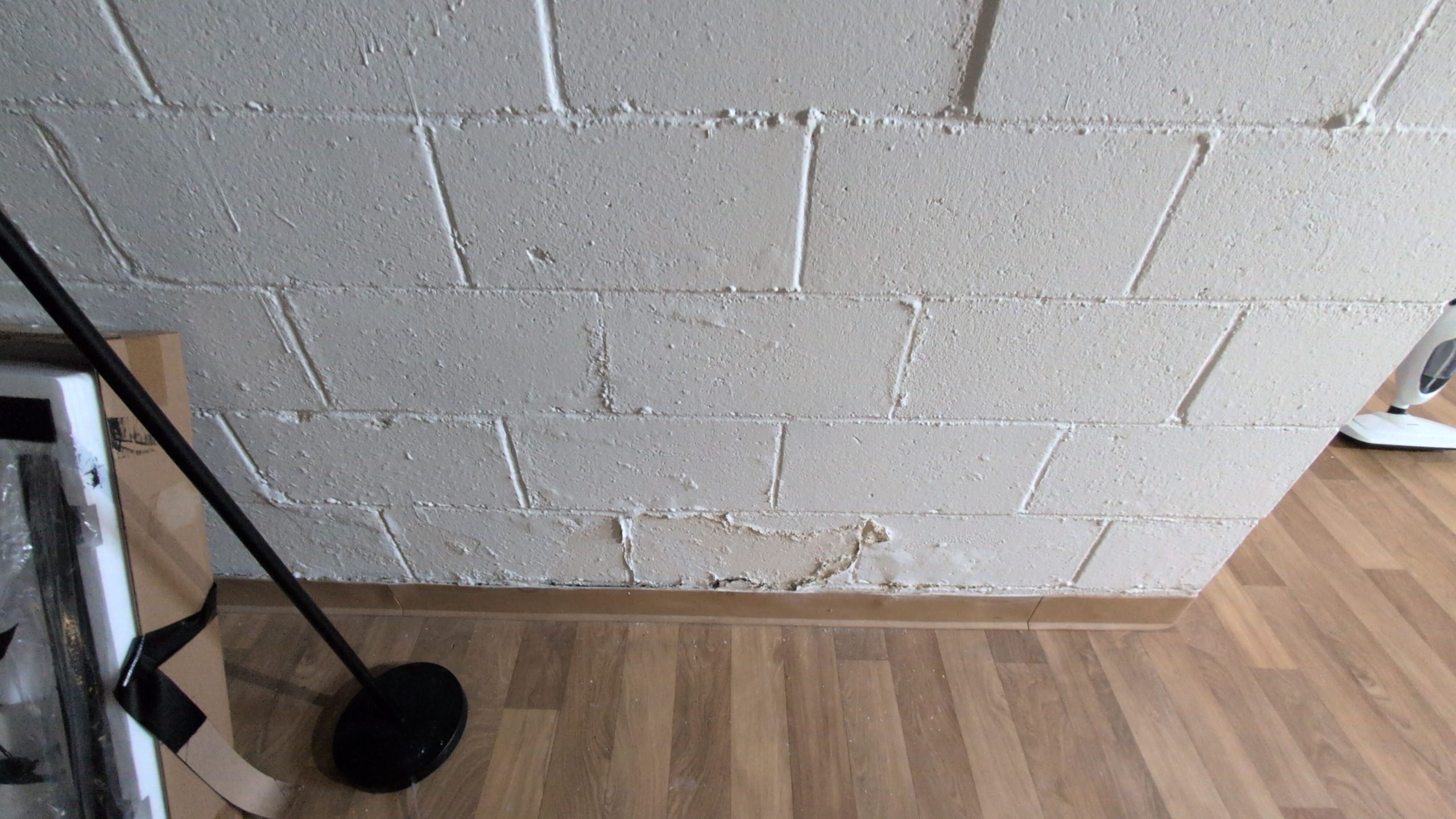
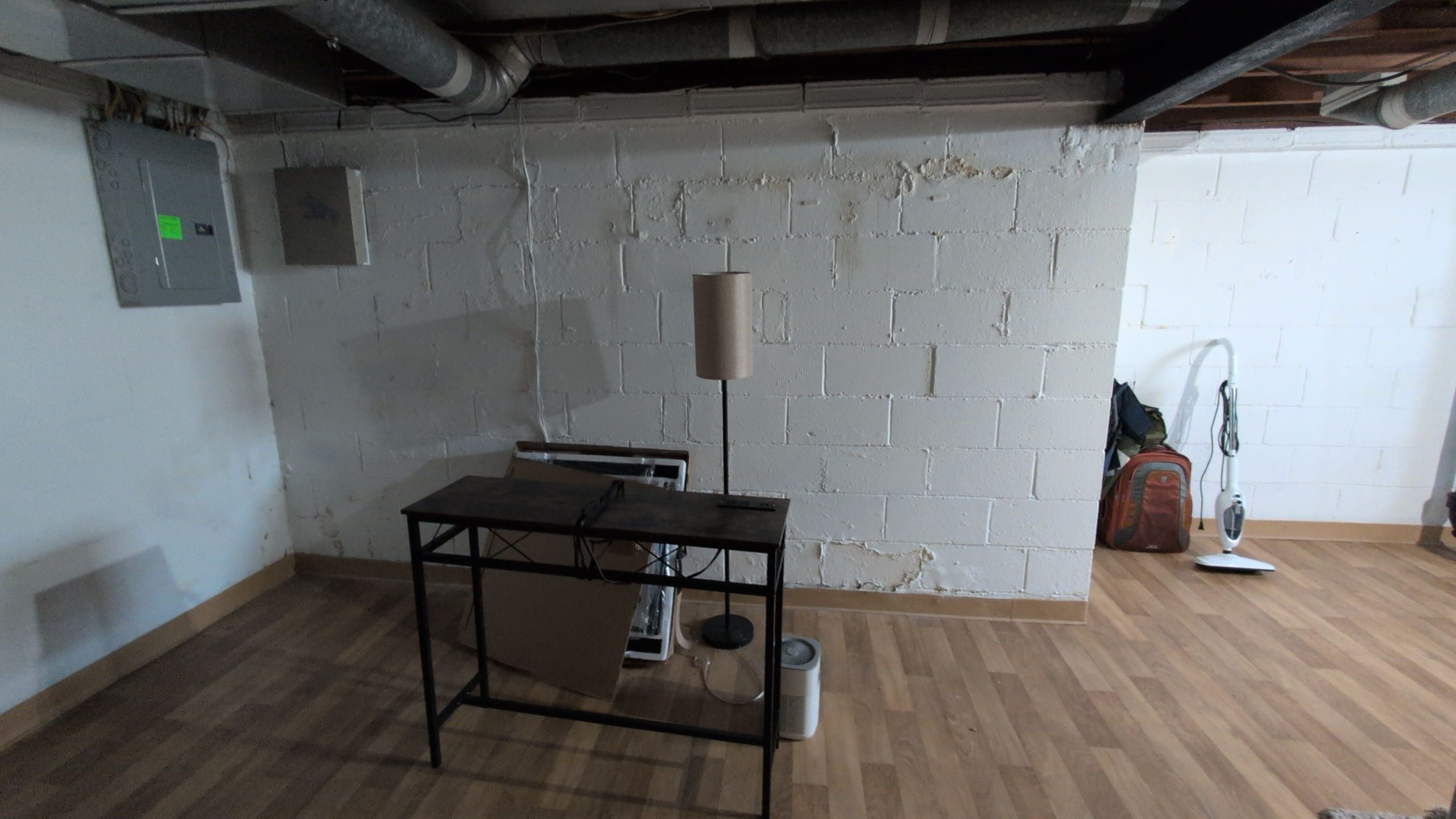
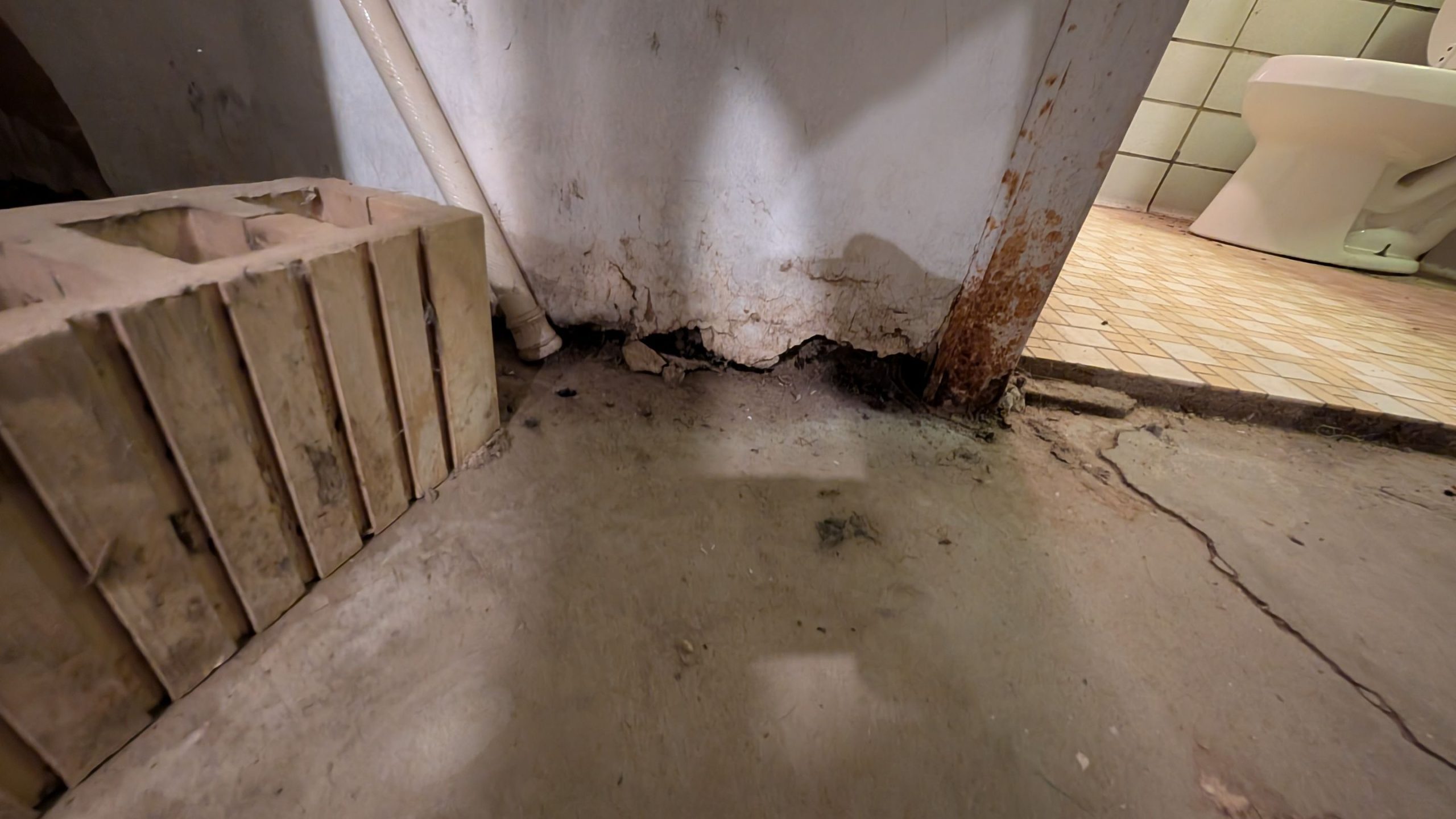
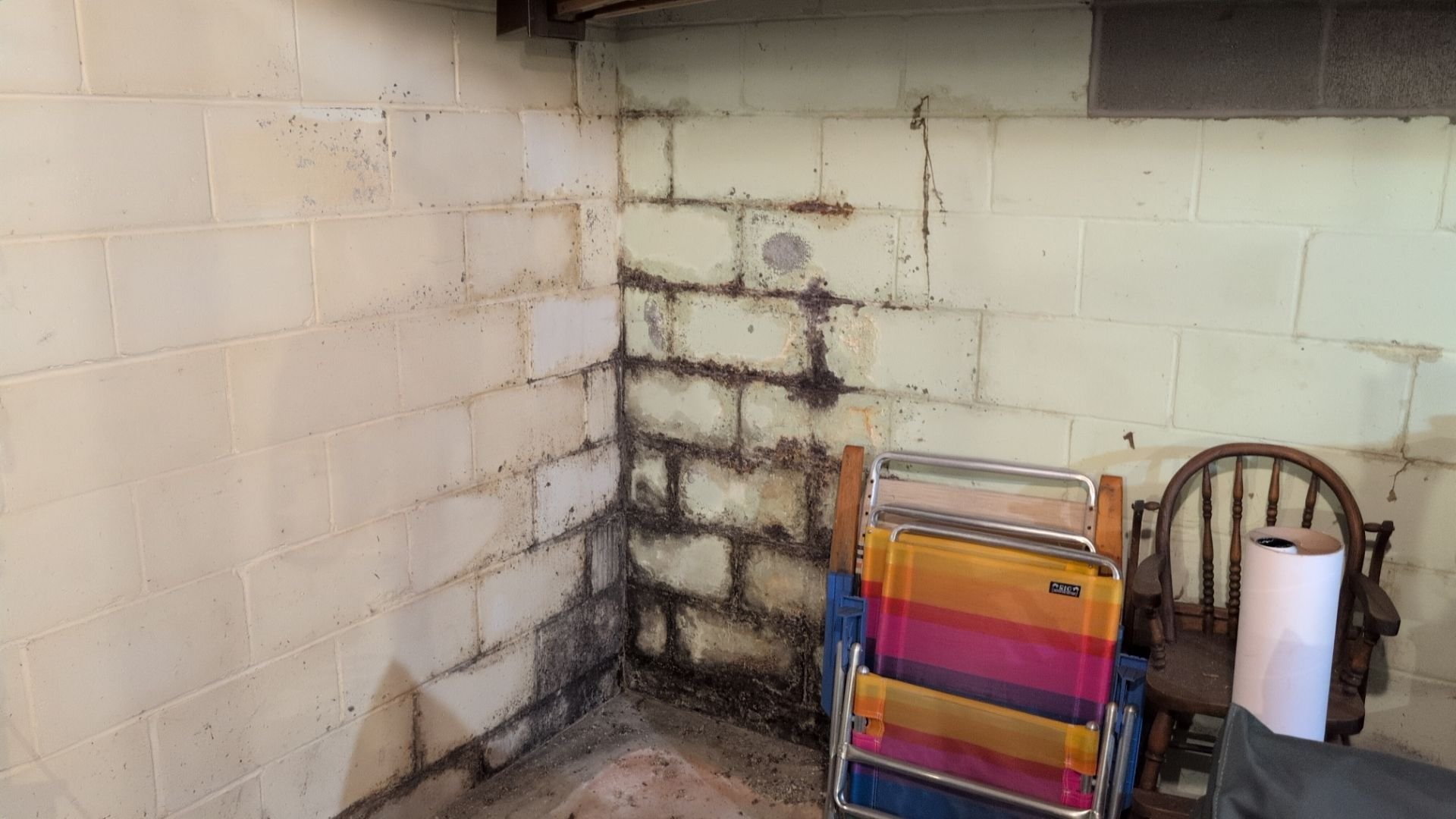
Check for These Warning Signs
If you notice any of these warning signs, it’s smart to call a waterproofing specialist before finishing begins:
- Visible water stains or puddles
- Cracks in the floor or walls (horizontal cracks are especially concerning)
- White, chalky residue on walls (known as efflorescence)
- Mold growth, especially black, white, or reddish areas
- Musty odors, even with no visible moisture
- Peeling paint or warping paneling from prior damage
- Running a dehumidifier 24/7
If your basement checks 2 or more boxes, talk to a waterproofing professional before finishing your basement.
What Happens If You Don’t Address Basement Water Issues First?
Skipping waterproofing might save you money upfront, but it often costs homeowners much more in the long run. Once walls are up and flooring is down, even a small leak can cause thousands in repairs, not to mention health risks or resale headaches.
Here’s what we’ve seen happen when water issues aren’t handled first:
- Damage to flooring, drywall, and insulation (which all need to be torn out and replaced)
- Mold growth behind walls, causing poor air quality and potential health concerns
- Structural deterioration, like cracked slabs or bowing walls
- Lower resale value (and painful disclosure conversations with future buyers)
- Living with anxiety every time it rains
“Who wants to be watching TV with friends and suddenly see water coming across the basement floor?”
— Zach, Energy Swing’s basement finishing design expert
Even if your basement looks dry now, water can show up unexpectedly, especially in Pittsburgh’s unpredictable climate. That’s why we always recommend resolving moisture risks before you build. It’s cheaper, safer, and gives you real peace of mind.

Should You Get an Interior or Exterior French Drain?
If you’re considering waterproofing before finishing your basement, you’ll likely come across two main options: interior and exterior French drains. Both systems are designed to manage water, but they work in different ways, with different costs, disruptions, and use cases.
Here’s a clear breakdown:
| Feature | Interior French Drain | Exterior French Drain |
|---|---|---|
| Location | Inside the basement along perimeter | Outside foundation at footing level |
| Disruption | Jackhammers interior concrete floor | Excavates the entire exterior foundation |
| Cost | Typically $10K–$40K (depending on size) | Often $20K–$60K+ due to excavation labor |
| Lifespan | Protected from roots and soil, less prone to clogs | Can clog with soil or roots over time |
| Installation Speed | 1–3 days in most homes | May take 1–2 weeks, weather permitting |
| Best For | Finished or finish-ready basements | New builds or when doing major exterior work |
| Sump Pump Tie-In | Easily integrates with an indoor sump system | May still require a sump or gravity exit system |
Which One Makes Sense for You?
For most homeowners finishing their basements, an interior French drain is the preferred solution. It’s faster to install, causes less disruption, and ties directly into a sump pump without the need to dig up your yard or foundation.
When an exterior system might be better:
- You’re building a new home or addition
- Your foundation is already exposed for another project
- You’ve had persistent foundation wall leaks from outside pressure
How Much Does a French Drain Cost in Pittsburgh?
French drain costs can vary depending on your basement’s size, layout, and how much of the perimeter needs protection. Here’s what homeowners in the Pittsburgh area typically spend:
- Partial drain (one wall): $10,000–$12,000
- Full perimeter drain: $20,000–$40,000+
While that’s a significant investment, it’s often a one-time fix that protects your finished basement for decades and can save you from the much greater cost of tearing out drywall, flooring, and insulation due to hidden water damage later on.
Pro Tip: Before jumping straight into a full French drain, check whether your water issues could be resolved with more affordable exterior fixes:
- Extending or reconnecting downspouts
- Repairing gutters or adding leaf guards
- Improving the grading around your foundation
These smaller improvements might prevent water intrusion entirely and are often a smart first step before committing to interior drainage.
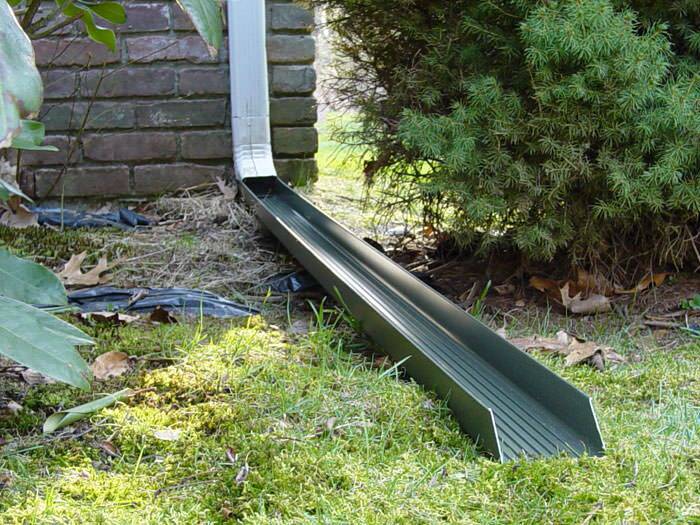
Who Should Install a French Drain in the Pittsburgh Area?
French drains aren’t DIY-friendly. To work properly and stay hidden once your basement is finished, they need to be installed by experienced pros who specialize in basement waterproofing.
Here’s what to look for in a qualified installer:
- Local waterproofing specialists with experience in Pittsburgh’s soil, climate, and home construction
- Teams that coordinate with basement finishing pros to properly install vapor barriers and drainage zones
- Experience working around sump systems, with clean tie-ins and no interference with future wall or floor framing
At Energy Swing
We don’t install French drains ourselves, but we have seen the work of reputable contractors in our area. If you’re planning to finish your basement, we’ll help assess your space, and if it looks like you’ll need a French drain, we’ll connect you with vetted drainage pros. That way, you don’t have to guess or coordinate it all alone.
When Is It Safe to Skip a French Drain in Pittsburgh?
Not every basement needs a French drain before finishing, and if yours has stayed dry for years, you might be in the clear.
Here are good indicators that it’s safe to move forward without interior drainage:
- Your basement has stayed dry through Pittsburgh storms for 10+ years
- There are no visible signs of water, mold, or musty odors
- You’ve already fixed gutter, downspout, or grading issues
- You plan to use a dehumidifier or other moisture control tools
But a word of caution: Pittsburgh basements can go years without a leak until that one big rainstorm finds the weak point. And once your walls and flooring are up, fixing a drainage issue after the fact usually means tearing it all out.
What’s the Right Timeline: French Drain First or Basement Finishing Together?
Short answer: French drain first. Always.
Here’s why the order matters:
- You want to monitor the system before covering it up: Let it run during at least one rainy season to confirm it’s working correctly—no leaks, no surprises.
- Any adjustments are easier (and cheaper) before walls go up: If a sump pump needs to move or a drain line shifts, you want to find out before drywall is in place.
- It makes finishing cleaner and more space-efficient: Knowing exactly where your drainage system lives allows for smarter design, better framing, and tighter vapor barrier integration.
- Peace of mind is part of the finished product: Your basement should feel dry, comfortable, and worry-free—not like a “we’ll see what happens” situation.
Bottom line: Get the drain done first, test it through a few storms, and finish your basement with full confidence.
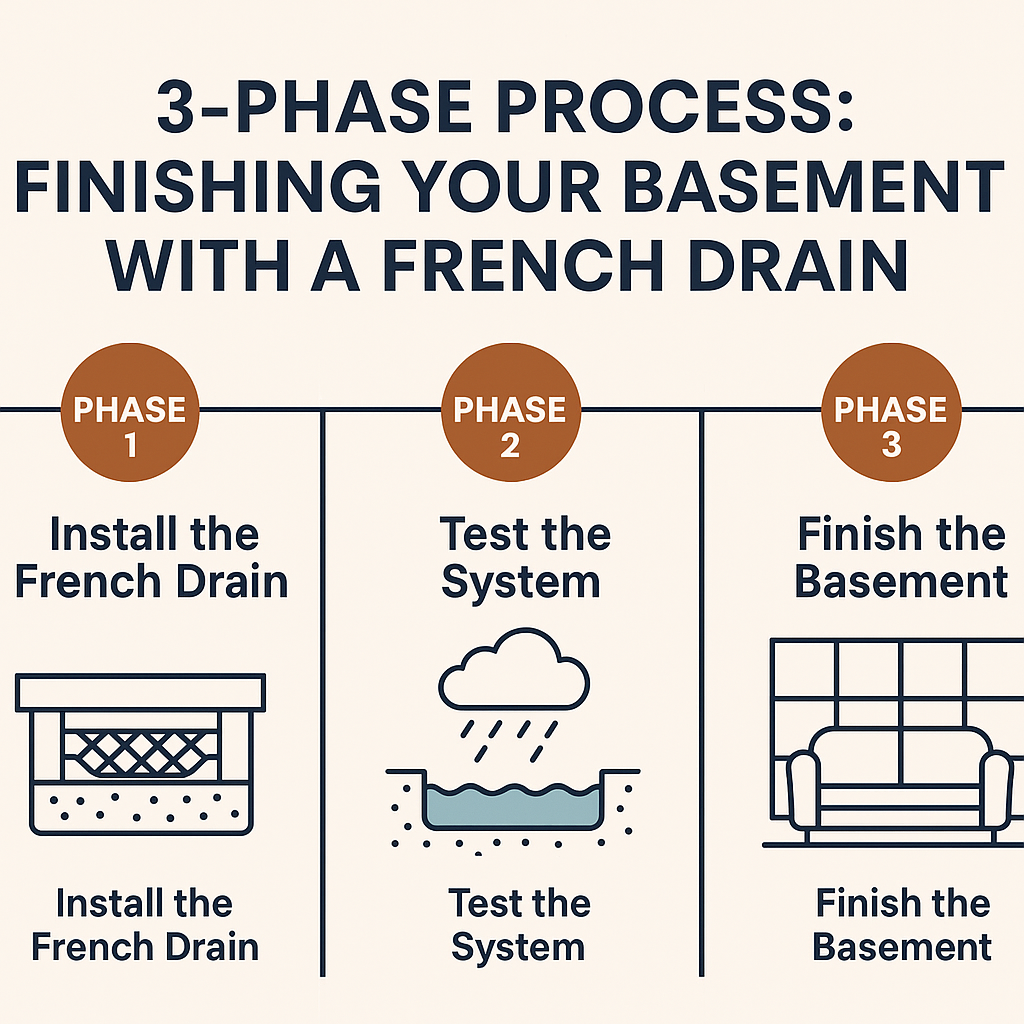
So, Should You Get a French Drain Before Finishing Your Basement?
If you’re thinking about finishing your basement but aren’t sure if a French drain is needed first, you’re not alone. It’s one of the most common (and important) questions we hear from Pittsburgh homeowners.
Here’s the good news: You don’t have to figure it out on your own.
At Energy Swing, we don’t install French drains, but we do know what to look for before any finishing work begins. If we spot moisture concerns or red flags, we’ll tell you straight and recommend a trusted waterproofing contractor.
If your basement looks good? We’ll give you the green light and help you plan a beautiful, dry, and healthy finished space that’s built to last.
Give us a call or schedule a free basement assessment. We’ll evaluate your space and give you our best, honest recommendation—no pressure, no surprises.
Frequently Asked Questions: French Drains & Basement Finishing in Pittsburgh
-
Can I install a French drain after my basement is already finished?
Technically, yes. But it’s not ideal. Installing a French drain after finishing usually requires removing flooring, wall, and possibly framing along the perimeter. That means redoing a big portion of the work you already paid for. If you think you might need a French drain in the future, it’s much smarter to install it first.
-
Do all homes in Pittsburgh need a French drain before finishing their basements?
Not at all. Many Pittsburgh-area homes stay completely dry year-round. If your basement has been dry for years—even during heavy rain—and shows no signs of water or mold, you can likely skip the drain. Still, it’s always worth a quick inspection to be sure. A one-time assessment can save you thousands down the road.
-
Will having a French drain affect how my basement can be finished?
Yes, slightly. French drains—especially interior ones—can reduce finished space along perimeter walls and may require a sump pump closet. That’s why it’s important to work with a basement finishing team (like ours!) that knows how to finish around drainage systems without compromising comfort, aesthetics, or durability.
Zach Fontecchio is a Client Consultant at Energy Swing who specializes in Basement Finishing. Having work with homeowners across the Pittsburgh area, he understands how to find the right basement finishing solutions based on homeowner needs.
